Beth Kephart's Blog, page 169
August 17, 2012
It's Official—and Cover Reveal: Dr. Radway's Sarsaparilla Resolvent
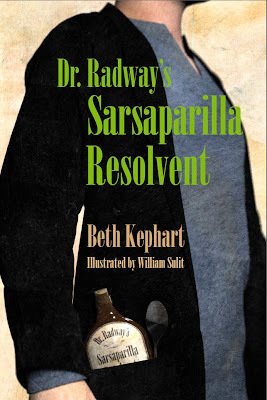
Many years ago I wrote an odd book called Flow: The Life and Times of Philadelphia's Schuylkill River. Flow had grown out of my love for my city, was supported (in all its strangeness) by a Pew Fellowships in the Arts grant, and was published by the best possible house for a book such as that one: Temple University Press. Micah Kleit, my editor, gave the book room, while Gary Kramer, a savvy and delightful publicist with deep Philly roots, gave it wings. Not so run-of-the-mill in tone, structure, and voice, but always Philly true, Flow sits today—slender and alive—on my shelves, thanks to Micah's picking up the phone when I called.
From Flow grew Dangerous Neighbors (Laura Geringer Books/Egmont USA), my 1876 Centennial novel. Katherine, a bereaving twin, stands at the heart of that story, but just one step to her left is a character named William, a young man from the poor side of town who rescues lost animals for a living. William was a character who never left my thoughts. He lived with me long after Dangerous Neighbors ended.
Soon I was conjuring William as a young adolescent living among the machines of Baldwin Locomotive Works in 1871 Philadelphia. His brother has been murdered by a cop (the murder based on a real Philadelphia event), his father is in Eastern State Penitentiary, and it is up to William to protect his heart-and-soul-sickened mom. William gets some help in this from his best friend, Career, who has a job with the newspaper man, George Childs. He gets help, too, from a prostitute named Pearl, and from the little girl next door. He thinks he's getting help from the variety of medicines (that sarsaparilla resolvent among them) that were being pedaled at the time. And those ginger-haired twin girls from Dangerous Neighbors? They're in and out of his poor neighborhood, thanks to their feminist mother.
After I'd finished writing this novel, I sat and thought for a time about publishing options. I wanted a true Philadelphia home for this book. I wanted an opportunity to work with a house that might connect this story to Philadelphia school children, museum goers, history buffs. It wasn't long before I was writing a note to Micah at Temple University Press, who thought the story sounded interesting and encouraged me to send it on to his colleague, Stephen Parks. Steve is a Syracuse University professor who also runs New City Community Press. NCCP began as a literacy project in the public schools of Philadelphia, won a major national grant in support of its ethos, and remains today committed to telling community stories. I liked the sound of all that, and so, last February, I met Steve in Chestnut Hill and we talked. There's been no question (in my mind) about this book's future ever since.
Today I can officially announce that Dr. Radway's Sarsparilla Resolvent will be released next March from New City Community Press and distributed by my friends at Temple University Press. It will be illustrated by my husband, William Sulit, who also designed the book's cover, revealed for the first time here; for a glimpse of interior art, go here and for more of Bill's art, go here. In January, Egmont USA will release the paperback of Dangerous Neighbors, with my teacher's guide bound in (the starred PW review of Dangerous Neighbors can be found here.). It is my great hope, then, that the two books will make their way into the homes and hearts of Philadelphians and others. There are some other fun developments in regards to this project, but I will save them for later. For now, my great thanks to Micah, to Steve, to Gary, to Egmont USA for the paperback, and to Amy Rennert, my agent, for stitching the innumerable parts of my crazy dreams together.[image error]




Published on August 17, 2012 03:54
August 16, 2012
making the case for the critical tongue

This morning, I turn your attention to Dwight Garner's New York Times essay on criticism, and why the world needs more of it. You can find the whole here.
My own blog post is not in need much set up. The following two excerpted grafs (which do not run contiguously in the essay) put Garner's case squarely on the line. We need critics to tell it as it is, he says. And we need people to understand what criticism is.
The sad truth about the book world is that it doesn’t need more
yes-saying novelists and certainly no more yes-saying critics. We are
drowning in them. What we need more of, now that newspaper book sections
are shrinking and vanishing like glaciers, are excellent and
authoritative and punishing critics — perceptive enough to single out
the voices that matter for legitimate praise, abusive enough to remind
us that not everyone gets, or deserves, a gold star.
Marx understood that criticism doesn’t mean delivering petty,
ill-tempered Simon Cowell-like put-downs. It doesn’t necessarily mean
heaping scorn. It means making fine distinctions. It means talking about
ideas, aesthetics and morality as if these things matter (and they do).
It’s at base an act of love. Our critical faculties are what make us
human.
Garner makes good points, though I'm not in utter accordance with them all. My own stance on the matter is this: I read, often, dozens of books each month. On this blog I only talk about the ones I love. I didn't love, say, THE HELP or WILD—which puts me in a distinct minority—and so I do not write of them here. I choose, instead, to write about that which inspires me, or heartens me. I choose not to add darkness to days, choose not to hurt if it is not required. When days go by without my blogging about others' books, that is because I've not lately fallen in love. Those would be those sweeps of time when you get, on this blog, fine domestic prattle, say, or precipitous news about my being named Most Pathetic.
But when I am asked—by the Chicago Tribune, by the Pennsylvania Gazette, by various other publications—to give my opinion about books I have not chosen, there is no walking away. I have an obligation, a responsibility, to tell it as I see it then, and often I'm not loving what I find. I was not, for example, a mega fan of AMERICAN DERVISH, and said as much in the Tribune. It may not in my nature to be cruel, but it is in my nature to be decisive about books. And so I aim, always, to criticize constructively, to speak of a book's perceived flaws as I would about the work of a beloved student.... to suggest, to query, to wonder out loud, to ask, Could more have been done?
We go about all of this in our fumbling ways. Later today I will be cross-posting the official review of a book I did genuinely love. (And I'm not alone in that.) When you read that review know that I meant it, true. That I was not cowering, not going small.




Published on August 16, 2012 05:30
August 15, 2012
Beth Kephart Temporarily Wins the Most Pathetic Award

You thought that title was a tease? Because when do I ever tease? And why would I? And do I even have the shape and general vocabulary of teasing in me?
I do not.
Proof: In a friendly battle currently being conducted on behalf of Tara Altebrando's distinctly unpathetic new novel, The Best Night of Your (Pathetic) Life (nothing Tara writes is pathetic; she's too clever and language invested and talented for that; read my review here of Dreamland Social Club), I have gone up against true literary greats—Gayle Forman, E. Lockhart, Sarah Miynowski, Arlaina Tibensky, and Lauren Myracle—and been found to be the reigning queen (at least in this hour) of pathetic-ism.
Wait. Is this a good thing? A boast-worthy thing? Should I be trumpeting this all over e-creation?
Oh, never mind. I am the temporary champ of something. I can count the times that's happened to me on one hand of five fingers with variously filed fingernails. I am running with this.
The contest (grueling, requiring months of training and a Michael Phelps diet) all came down to a tricky little Tara questionnaire. I answered as honestly as I knew how, between gulps of Phelps-style pasta. I answered, tone and fit. But of course, I answered imperfectly and do feel the need here to say, about that high school friend, that we found each other years later, and became quite close again, and really, that guy wouldn't have been right for me anyway; my friend was doing me a favor. I also feel the need to confess, as those of you who follow me on Facebook now know, that I may not have ever purchased Twilight tickets, but I am now ballroom dancing to Twilight music.
(You have no idea what I'm talking about. That's the point of links like these. You have to go and find out for yourself.)
Tara's questionnaire, which can be found here, includes the following tidbits. I choose this brief passage to underscore my obsession with winning—anything. Please check out the entire contest, and Tara herself, who is lovely beyond words (and who has some very exciting co-authoring news, concerning another great, Sara Zarr).
TA: See now I may give you some Special Points for this, just
because it’s so awful and sad! What an evil cow! Do you know what an
isocahedron is without Googling? If not, give us your best guess.
BK: I do, I do! I actually have this funky mathematical term in my YA
novel YOU ARE MY ONLY, and not just once. This would be thanks to the
fact that my brother is a math genius and I wanted to honor him. Can I
have triple points for this one, please? I need something here to put me
on a fair playing field. I hate losing.
TA: Again with the points!




Published on August 15, 2012 08:26
can you tell the truth? (The Night of the Gun)
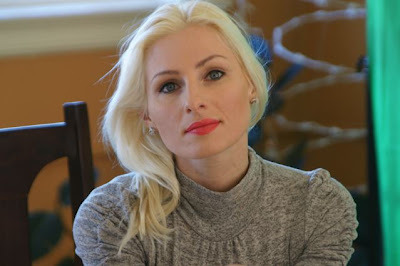
My respect for David Carr, the New York Times reporter, bestselling author, and (with A.O. Scott) Times video celeb, has been reported here. What you've not seen on this blog is talk about Carr's reportorial memoir, The Night of the Gun. By his own admission, Carr was a substance abuser of the very first order—a "maniac" who went from handling whiskey and cocaine (barely) to not handling crack to smacking women he loved with an open hand to raising twins while failing at rehab to carrying a gun he doesn't remember, or didn't remember until he started tracking down his own past.
Like the scrupulous Times reporter he miraculously became, Carr sought out and interviewed those whose lives intersected his during his wilderness years. He weighed his idea of things against police records and the recall of old friends. He sorted, sifted, and spun in an attempt to understand not just who he was, but who he is, and how the was and the is somehow survive inside the same knocked-about skin.
It's fascinating reading, memoir painstakingly stitched. It has a lot to say not just about Carr's life, but about what truth is and what to do with all the stuff we can't rightly remember. Here's an early paragraph that wisely captures one of my pet peeves (we shall read more about this in Handling the Truth)—memoirs filled with dialogue from hazy childhood days.
I read some of the classics of the genre, debunked and not. After reading four pages of continuous ten-year-old dialogue magically recalled by someone who was in the throes of alcohol withdrawal at the time, I wondered how he did it. No I didn't. I knew he made it up. It was easy and defendable, really, sublimating and eliding the past in service of a larger Emotional Truth. Truth is singular and lies are plural, but history—the facts of what happened—is both immutable and mostly unknowable. Can I somehow remember enough to type my way to an unvarnished recitation of what happened to me? No chance.
A note for the curious: I use Lana Roosiparg's gorgeous face as my photo of the day for no other reason than that it is a singular, and therefore, true one. Lana is one of the four talented and lovely people recently featured in my husband's art. This is an outtake from the photo shoot that yielded those hallucinatory worlds.




Published on August 15, 2012 06:39
August 14, 2012
suburban outlaw

Maybe it will rain today, and I would like that. I would hide away, on the couch, with a book, coming to this computer only when the corporate interviews called, the work emails pinged in. I would not say to myself, Beth. Get up. Exercise. Beth. Get up. Take a walk. Beth. Get up. Get ahead of all on which you are behind.
If it doesn't rain, I won't be easy on myself. I will spend too much time at this computer, worrying slightly over what to write next. I will hunt for the emails I never answered. (I am sorry; there are so many; I forget.) I will get up and I will walk, south, a mile or so, to the old stone church and the cemetery of trees and ruin, where just this past Sunday I went, checking the door on the chapel and finding it open and entering, in trespass, the suburban outlaw in me sitting alone in the pews and clicking the camera, just once.
Maybe it will rain.




Published on August 14, 2012 05:50
August 13, 2012
Gabrielle Hamilton (Blood, Bones and Butter) on Writing vs. Doing, Lit Talk vs. Literature.
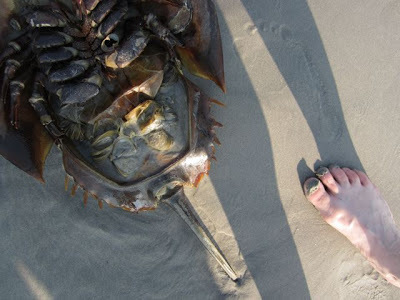
The other day, I asked my industrious screenplay-writing son whether he thought it might be helpful to get a handbook on the art form, to help with the next leg of his journey. He has been too much like me, perhaps—trusting his own instincts, going his own way, paying little attention to the known "shoulds" of crafting stories for big and little screens. He's been at work as a writer for more than half his life now, and that work has become remarkably good—cleverly plotted, well-paced, full of dialogue zing. But what are the next steps? How best to take them?
I was thinking about this again yesterday as I read Gabrielle Hamilton's bestselling, nothing-if-not-vivid account of accidental chefdom, Blood, Bones & Butter. Hamilton had not set out to open a restaurant (the beloved Prune). Nor had she set out to become a writer. Both things happened, and her memoir tells us how. It reflects, most profoundly, on what education is—how it finds us, when it matters, what to do with the taught and the merely surmised.
A third of the way through the book, Hamilton tells of the time she spent enrolled in the master's program for fiction at the University of Michigan. She had drawn the conclusion (prematurely, as it turns out) that a writer's life might yield greater meaning than the life of a cook. She had made her way into the program based on talent, as opposed to provable familiarity with literary theory. But that master's program was, she discovered, a foreign, alien world, where the talk centered around, in Hamilton's words, "second person static point of view," "indirect interior discourse," "narrative strategy," "chiaroscuro," and "diction." It all threw Hamilton back onto her heels until she tipped forward and discovered (again) how much meaning there is in preparing food with one's hands, in doing, rather than theorizing.
I have never gone to graduate school and my education is rooted in the History and Sociology of Science, not literature. I empathize, then, with the marginalizing nature of lit theory talk, have had my share of being purposefully shamed by those who bandy about terms in my presence, just for the sake, it has often seemed to me, of bandying, elevating, and hopefully (their hope) dismissing others in the room. Yes, I have thought, you are right. I don't know what whatever it is that you just said means, and thus and therefore, you are smarter and more valuable than moi.
I have thought that, then shrugged and gone back to writing my books.
Hamilton, though, refuses to kowtow at all, as she fearlessly expresses here. I plan to share this passage with the many writing students who ask me whether graduate school is the next right step for them. I don't know the answer, because there is no single answer, because I will never pretend to know such things for absolute sure. Hamilton's experience is her experience, her stridency is, too. Still, it is worth listening to:
In the university program where I was supposed to be emancipating myself from the kitchen, preparing myself to go back to New York having at least answered the question of my own potential, the novelty and thrill had thoroughly worn off. I could not find the fun or the urgency in the eventless and physically idle academic life. It was so lethargic and impractical and luxurious. I adored reading and writing and having my brain crushed; but those soft ghostly people lounging around the lounge in agony over there "texts," endlessly theorizing over experiences they would never have, made me ache to get out of the leather chairs, to put my shoes and socks back on, and get back into the kitchen, which I increasingly found practical and satisfying. The work may not have held much meaning and purpose, but I was gunning the motor of my car to get off campus and get to it each day.
... This is not to suggest that I accepted this understanding about myself gladly, with just a sneering dismissal of the pursuit in the first place. Human condition. It's a blow to have to admit to yourself that you are not quite cut out for something that matters so much to you. More than a blow—it's a knockout. I had to lie down on the floor of my apartment for a very long time letting that one sink in. Did I have something more to offer, any other talent than a strong work ethic? Did I have something in me other than dishwasher?
As it turns out, I did not.




Published on August 13, 2012 06:42
August 12, 2012
the Olympic midnight mouse, and the romance of it all
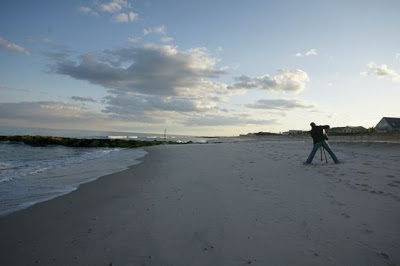
As much as I love the Olympics—Missy Franklin's smile, Ally Raisman's fortitude, Bolt's bolts, Oscar Pistorius, Misty and Keri, the Call Me Maybes, Michael Phelps, the super divers, Mo Farah, royal fashions, travelogues, the roar of contained fire—I feel a hint of relief when the games come to an end. Life will return to what life was. I'll read more in the evening.
Last night, my husband having persuaded me to watch the Brazil-USA women's volleyball final, I wandered into the pantry late and there, three shelves up, its nose in a box of crackers, was a furry gray thing. It didn't move, but I—an inveterate neat freak, an everyday housecleaner, and yet a woman (it is true) who had let her pantry go these past two weeks—screamed.
I've never had a pantry mouse before.
There were decisions to be made. Who can kill a furry thing? Who can let it stay? In time, the mouse scurried down the wall and hid beneath the paper bags I had meant to recycle a good two weeks ago. From there it made a bee line for the dining room and proceeded, for the next 60 minutes to creatively dash and hide. This was a smart mouse, an Olympic mouse. It clung to the denuded pipes of the old radiator. It hid beneath a dish. It zigged when we zagged and zagged when we zigged. It did not wish to be caught.
It was a minor drama. We needed strategies, quick. I barricaded. My husband broomed. I dug an old shoe box out of my son's room, which can be counted on for many a thing that should have been recycled months ago. Dash, then silence. Tail, then scream. I stood on a chair for a courage-free five minutes while it ran beneath me. My husband would never do such a thing.
In the end, the mouse was shoe boxed and carried outside. In the end, those errant paper bags were recycled and every open box discarded (there were only three) and I scoured every surfaced touched by mouse. In the end, too, there was the exhilaration, perhaps even the romance, of having teamed in such savvy fashion with my husband. We weren't just watching the Olympics this time. We had our own starring roles. It's the closest I've come to an adventure this summer.
Maybe I need a vacation.




Published on August 12, 2012 05:09
August 11, 2012
Sarah Hepola on lighting ourselves on fire
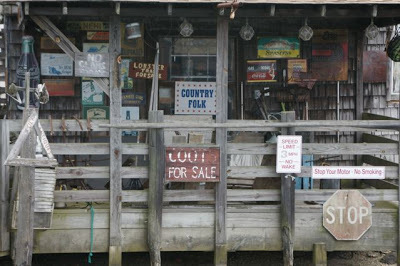
This morning I did that thing that relaxes me most of all—tapped into my iPad, read from the New York Times, watched the weekly A.O. Scott and David Carr Times video. (Have you watched them? Do you like them? How can I explain my addiction to this reliably circumlocutory conversation?)
Tucked into the Magazine was an essay on Cat Marnell by Sarah Hepola. Hepola, among other things, selects and sometimes writes those often controversial, lightning-rodesque personal essays for Salon.com. Years ago, when the internet had not yet become so prone to anonymous nastiness and viral cat fights, I wrote for Salon—occasional essays and reviews. I shared a community there with its early founders and creators and co-writers—Kate Moses, Susan Straight, Camille Peri, others. I stopped when the stakes grew too high, when I could no longer see the value add of putting one's life up for grab by the increasingly ridiculing masses. I have watched friend after friend get burned in that forum. Insta-fame, yes. The costs: high.
Hepola's entire piece on Marnell and Marnell's own unfiltered confessions makes for fascinating reading. But it is this penultimate paragraph that should, I think, be required reading for us all. I share this as memoirist and as a teacher of memoir and, also, (does this make it better or worse?) a writer about the making of memoir—how it gets done, what happens when it does (the themes not just here on my blog but in my forthcoming book, Handling the Truth).
Here is Hepola:
I worry about anyone who is lighting themselves on fire for our
enjoyment. I worry about the bloggers and viral stars who have burned up
so much of themselves for the prize of a few thousand followers. Our
attention span is so short these days. One minute you’re a meteorite
lighting up Google Trends, the next minute you fall back to earth,
another piece of ugly, busted-up coal.




Published on August 11, 2012 04:47
August 10, 2012
'nough said.
Published on August 10, 2012 07:29
August 9, 2012
My husband's art (4)
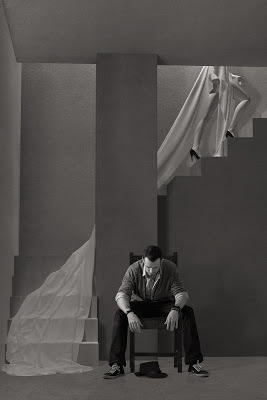
Jan
For more on what this image is, how it was made, and why I love it, go here.
Click on the image to see it in bright detail.




Published on August 09, 2012 14:03






